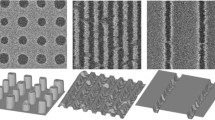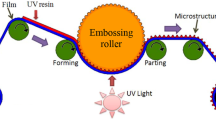Abstract
This paper presents an enhanced non-destructive optical measurement method crucial for 3D IC technology. Utilizing a deep neural network and electromagnetic simulation tool, an inverse model is established to predict the critical dimensions (CD) of micron and sub-micron structures. The forward model accelerates data generation, overcoming limitations of the finite-difference time-domain (FDTD) method. Compared to FDTD simulations of reflectance spectra which take about 50 min, the model's prediction time for reflectance spectra is only 0.01 s. The three key dimensions with better prediction results from the inverse model are top radius (Rtop), height, and bottom radius (Rbot). In the proposed joint training model, by simultaneously training forward and inverse models and adjusting the weights of forward and inverse loss functions, the mean absolute percentage error (MAPE) for Rtop, height, and Rbot is reduced from 0.26 to 0.08%, 0.69 to 0.44%, and 4.01 to 0.6% respectively.











Similar content being viewed by others
References
Lee, J., Dong, H., Ji, D. Y., & Kundu, P. (2023). Cyber-physical systems framework for predictive metrology in semiconductor manufacturing process. International Journal of Precision Engineering and Manufacturing-Smart Technology, 1, 107–113.
Kim, S. W., Kong, J. H., Lee, S. W., & Lee, S. (2022). Recent advances of artificial intelligence in manufacturing industrial sectors: a review. International Journal of Precision Engineering and Manufacturing, 23, 1–19.
Kim, S., Jeon, J., Kim, Y., Sugita, N., & Mitsuishi, M. (2023). Design and assessment of phase-shifting algorithms in optical interferometer. International Journal of Precision Engineering and Manufacturing-Green Technology, 10(2), 611–634.
Peng, B., Hou, W., & Xu, Q. (2018). Precision 3D profile in-line measurement of through-silicon via (TSV) based on highfrequency spectrum signals in the pupil plane. Optics Communications, 424, 107–112.
Wang, G. G., & Shan, S. (2007). Review of metamodeling techniques in support of engineering design optimization.
Shan, S., & Wang, G. G. (2010). Survey of modeling and optimization strategies to solve high-dimensional design problems with computationally-expensive black-box functions. Structural and multidisciplinary optimization, 41(2), 219–241.
Kuo, H.-F., Faisal, M., & Su, S.-F. (2016). Linewidth reconstruction employing a radial basis function network in optical scatterometry. IEEE Access, 4, 6739–6748.
Heidenreich, S., Gross, H., Henn, M., Elster, C., & Bär, M. (2014). A surrogate model enables a Bayesian approach to the inverse problem of scatterometry. Journal of Physics: Conference Series, 490(1), 012007.
Farchmin, N et al. (2019) Efficient global sensitivity analysis for silicon line gratings using polynomial chaos. In Modeling aspects in optical metrology VII (Vol. 11057, p. 110570J). International Society for Optics and Photonics.
Heidenreich, S., Gross, H., & Bär, M. (2018). Bayesian approach to determine critical dimensions from scatterometric measurements. Metrologia, 55(6), S201.
Kallioniemi, I., Saarinen, J., & Oja, E. (1998). Optical scatterometry of subwavelength diffraction gratings: Neural-network approach. Applied Optics, 37(25), 5830–5835.
Kallioniemi, I., Saarinen, J., & Oja, E. (1999). Characterization of diffraction gratings in a rigorous domain with optical scatterometry: Hierarchical neural-network model. Applied Optics, 38(28), 5920–5930.
Battie, Y., Robert, S., Gereige, I., Jamon, D., & Stchakovsky, M. (2009). Demonstration of the feasibility of a complete ellipsometric characterization method based on an artificial neural network. Applied Optics, 48(28), 5318–5323.
Kuo, H.-F., & Faricha, A. (2016). Artificial neural network for diffraction based overlay measurement. IEEE Access, 4, 7479–7486.
Wei, S., & Li, L. (2008). Measurement of photoresist grating profiles based on multiwavelength scatterometry and artificial neural network. Applied Optics, 47(13), 2524–2532.
Zhu, J., Liu, Y., Purandare, S., Jin, J.-M., Liu, S., & Goddard, L. L. (2019). Optical deep learning nano-profilometry. arXiv preprint arXiv:1908.07017.
Jin, W., Vuong, V., Bao, J., Lee, L.-Q., & Poslavsky, L. (2017) Accurate and fast neural network training for library-based critical dimension (CD) metrology. ed: Google Patents.
Inampudi, S., & Mosallaei, H. (2018). Neural network based design of metagratings. Applied Physics Letters, 112(24), 241102.
So, S., Badloe, T., Noh, J., Bravo-Abad, J., & Rho, J. (2020). Deep learning enabled inverse design in nanophotonics. Nanophotonics, 9(5), 1041–1057.
Han, C., Zhang, B., Wang, H., & Ding, J. (2021). Metamaterial perfect absorber with morphology-engineered meta-atoms using deep learning. Optics Express, 29(13), 19955–19963.
Zhu, L., Zhang, C., Guo, J., Dong, L., & Gong, J. (2022). Deep learning for electromagnetically induced transparency (EIT) metasurface optimization design. Journal of Physics D: Applied Physics, 55(31), 315001.
He, J., He, C., Zheng, C., Wang, Q., & Ye, J. (2019). Plasmonic nanoparticle simulations and inverse design using machine learning. Nanoscale, 11(37), 17444–17459.
Vahidzadeh, E., & Shankar, K. (2021). Artificial neural network-based prediction of the optical properties of spherical core–shell plasmonic metastructures. Nanomaterials, 11(3), 633.
Harper, E. S., Coyle, E. J., Vernon, J. P., & Mills, M. S. (2020). Inverse design of broadband highly reflective metasurfaces using neural networks. Physical Review B, 101(19), 195104.
Xiang, J., & Zhong, Y. (2016). A novel personalized diagnosis methodology using numerical simulation and an intelligent method to detect faults in a shaft. Applied Sciences, 6(12), 414.
Gao, Y., Liu, X., & Xiang, J. (2021). Fault detection in gears using fault samples enlarged by a combination of numerical simulation and a generative adversarial network. IEEE/ASME Transactions of Mechatronics, 27(5), 3798–3805.
Lou, Y., Kumar, A., & Xiang, J. (2022). Machinery fault diagnosis based on domain adaptation to bridge the gap between simulation and measured signals. IEEE Transactions of Instrumentation and Measurement, 71, 1–9.
Funding
This study was supported by National Science and Technology Council (Grant No. 112-2218-E-027-008).
Author information
Authors and Affiliations
Corresponding author
Additional information
Publisher's Note
Springer Nature remains neutral with regard to jurisdictional claims in published maps and institutional affiliations.
This paper was presented at ISMTII2023.
Rights and permissions
Springer Nature or its licensor (e.g. a society or other partner) holds exclusive rights to this article under a publishing agreement with the author(s) or other rightsholder(s); author self-archiving of the accepted manuscript version of this article is solely governed by the terms of such publishing agreement and applicable law.
About this article
Cite this article
Li, JW., Hsu, CH., Wang, JK. et al. Predicting the Critical Dimensions of Micron and Sub-micron Structures Using Joint Training Models and Electromagnetic Simulation Tools. Int. J. Precis. Eng. Manuf. (2024). https://doi.org/10.1007/s12541-024-00981-1
Received:
Revised:
Accepted:
Published:
DOI: https://doi.org/10.1007/s12541-024-00981-1




